Abstract
Background: Communication of patient information in a healthcare setting in previous years was based on documented information on paper records carried from one location to another. However, with the introduction of electronic health records (EHRs), communications are now conducted electronically via installed and connected computer systems that are networked together. Inadequate communication of patients’ information can deter patients’ health and threaten their lives, putting them in unnecessary danger.
Objective: The objective of this study was to design a standard EHR template model of communication for tertiary hospital that can be used in communicating patients’ information between various departments involved in the management of patients without carrying papers around or tossing Patients or their relatives up and down.
Method: The research adopts soft system methodology (SSM) with communication concepts from knowledge management, combining observations with various practical information to make a conclusion based on past experiences through a process of inductive reasoning, a communication model was developed that can be used as a template for hospitals to upgrade/integrate paper-based patient information management to electronic based in a bid to enhance patient care and information management.
Results: The developed communication template model has been designed to be adopted for use in a bid to manage patients’ information electronically in all tertiary hospitals and other hospitals that may so desire its use.
Conclusion: It is observed from this article that communication in hospitals through EHR template is user friendly, safe and possible within the hospital and to outside facilities for effective paperless management of patients.
Keywords: communication model; patients’ health information; electronic health records; the flow of information; data security; blockchain distributed information technology.
Introduction
It is important, if there will be an improvement in the coordination of care amongst the providers of healthcare, to be able to adopt electronic health record (EHR) effectively (Buntin, Jain & Blumenthal 2010; Williams et al. 2017). Today’s combined patient-centred healthcare necessitates linked data to valid coding for proper billing and funding, documentation standards, nomenclatures inclusive, which are all important in order to enable EHRs retrieve and analyse data whilst in support of decision-making processes for healthcare workers (Hoyle 2019). An inadequate way of managing and communicating patients’ health information can have dire consequences that can deter healthcare reform and threaten the safety of the patients. One key criterion for adopting EHR is adequate management of patients’ information that can be communicated easily between healthcare workers and between hospitals (Alhuwail 2020; Buntin et al. 2010; Hoyle 2019).
Health records include documentation made by various healthcare professionals in electronic or paper format, including digital images, photos, ultrasound scans reflecting images of the foetus, computerised tests such as electroencephalogram (EEG), referral or consult letters and other health information. Previously, it was assumed that only doctors documented processes, but this is no longer the case, as it now includes documentation from other healthcare workers (Marinič 2015). When healthcare workers record their patients’ information consistently, it ensures appropriate health monitoring, adequate planning and the right treatment. Paper-based health record management involves the use of paper records and other correspondences in the management of patients’ health. These include case notes, paper prescriptions, laboratory investigation forms, radiology request form, referral letters, consult letters requesting the expert management of a certain consultant and their team, billing sheets and lots more.
Electronic health record stores patients’ data in digital format that can be safely transmitted and made available to several authorised users in the shortest possible time. It contains the past, current and possible future information aimed at providing a continuing effective and efficient integrated health service (Alsadi & Saleh 2019). This involves the use of computer systems, networked together to manage patients’ health information and render quality service delivery. Tertiary hospitals are the hospital at the third level of care designed for rendering highly specialised medical and surgical services and equipment for curative, rehabilitative, teaching service and lots more. The tertiary health facility takes referral from other levels of care and can also refer to other service delivery hospitals (Flegel 2015). This study provides a designed standard EHR template model of communication for the tertiary hospital. It discusses the method of data transfer from one department to the other for the enhancement of patients’ care.
Literature reviewed
In getting an effective communication model using EHR in the hospital setting, one has to bear in mind some concepts, which must be well taken care of. These include the concept of communication, network connectivity, hardware maintenance, human skills, security concept and application of distributed information technology (DIT) blockchain for EHR. Hence, a communication template model is designed to enhance data management amongst departments.
Communication concepts
Communication refers to the transfer of ideas and information from one person to another through a defined medium. An effective communication takes place when it brings the resulting feedback
(Lunenburg 2010). When this concept is applied to health workers, it entails the flow of communication from the person at the lowest level to the highest regardless of their rank to provide healthcare services within the hospital. Services rendered in the hospital might be for preventive, curative and rehabilitative services: the reasons for which tertiary level of care is established.
Patients or their relatives visit the hospital for several reasons such as collection of medical certificates of fitness, general health check and screening, treatment of certain ailments, admission in case of health emergencies, follow up for continuity of care, even to the point of collection of corpses by the deceased relatives. When these types of services are sought in the hospital, particularly in this era of technology, there is a way information is being communicated between members of the health team electronically. This term involves the transfer of information from one person to another through a predefined medium, which should bring feedback before it can be termed effective. It can either be downward (from top person to lower person), upward (from lower person to top person), diagonal (amongst all departments, which may be in the form of vertical, horizontal, upward and downward, within the same workgroup and departments) or informal channel (flow of information either vertical or horizontal with persons at different levels all having direct relationships). Irrespective of the case the ultimate goal is the achievement of the purpose for which the message is being sent (Gurav 2020). Communication can also be understood as a process of transferring meaningful ideas or information from one person to another. In brief, communication is the transfer of information from the sender to the receiver, with the specific purpose. In a healthcare setting, communication occurs between patients, doctors, nurses, lab scientists, pharmacists, radiologists, health information management (HIM) professionals, billing, hospital management, health assistant and many others, but the intents of the message will determine its direction of flow.
Flowchart diagram of communication
Sender (which may be the patient, healthcare giver, hospital management)
↓
Message (clear, unambiguous ideas, which may be request for drugs, information or investigation or care)
↓
Medium (EHR)
↓
Receiver (recipients whose service is required by the sender)
↓
Feedback (reaction to the sender). The process continues all along as depicted in Figure 1.
 |
FIGURE 1: The flowchart diagram of communication. |
|
Connectivity to network
For communication to effectively take place with EHR in healthcare setting, there is a need for providing network connectivity. Computer devices such as laptops, desktops, tablet Personal Computers, and smartphones can communicate with each other over a variety of wireless technologies that are linked together using the Local Area Network (LAN) or wide area networks (WANs). A LAN is a network covering a small geographical area such as offices and homes and transmits data with a fast speed because of the distance the data are required to travel through. It can be owned and maintained by a hospital or an entity. Wide area network, on the other hand, is a network having an ability to cover large areas such as cities, countries and continents, for example, internet (Sahoo et al. 2020). Several working computer systems and other devices are needed to be linked together through a wireless network or communication devices. For EHR to be effective, all the hospital departments must be connected together on a platform, which can be accessed by the workers without having a physical contact, and they are to respond to information immediately as soon as they receive it (Boonstra & Vos 2014).
Hardware maintenance
Several hardware devices involved in EHRs include the desktops or laptops, tablets, servers, routers, workstations, inverters (backup device), printers, scanners and host of others depending on whether the storage options are cloud based or use client-server system. These hardware devices require continuous maintenance to avoid spending exorbitant amount of money on upgrading and replacement. This had been made easy through improved network protocols over the years (Campbell et al. 2014).
There is a need for the establishment of a technical support team who will be in charge of constant and continuous checking of all installed hardware and put-up practices and advice that can assist in the elongation of their lifespan.
A quality control team should also be constituted from amongst the hospital staff, who will move round to see the usage of this equipment and report any complaints to the technical support group for probable resolution. They are to ensure that the use of this technology (EHR) meets with the standard and specifications that had been spelled out. Figure 2 shows the flowchart for quality control towards achieving a quality EHR.
 |
FIGURE 2: The flowchart diagram of quality control functions. |
|
Subjective checks
This relates to pulling some randomly sampled units for inspection. It is important to check the way the end user works: how they navigate through the system and whether there are any challenges. When this is performed in a few departments, the findings can then be generalised for the whole hospital.
Print control
This is a setting to control the printing process to be carried out by the printer. The possibility of controlling the printing device of each user is assured from the setting of the print control. This is part of the checks that can be put in place by the quality control team.
Safety tips
Safety tips are guides to what should be done in a certain situation. In quality control, the safety tips should be made known to all so as to be able to raise an alarm to the team when things get out of normal. Part of these tips are specifying the quality standard, that is, the steps in the process, you desire an improvement, probably on promptness in responding to patients’ request and constant offer of training for staff. In addition, it allows the technology to take over your activities instead of applying physical human efforts, thus people will maximally put the EHR into use. The need for constant upgrading of equipment when needed is another saving grace. It may even include replacing outdated systems or ones that constantly break down. With all these in place, the last result will be to report any problem to the quality control team.
Prompt list
This is a type of a predetermined list of risk categories that are documented, which may likely occur or form the basis of risks for end users. This will allow the team to gather ideas for resolving the risks.
Operation monitoring
Operation monitoring are the periodic review to ensure that plans of operations are met, the safety, process, design, reliability and environmental limits if they are in effect, and if plans are being violated. And the probable way of having an improved performance. These are part of the function to be carried out by the quality control team.
Regular maintenance
This involves physically checking through on all the hardware and end users to ensure that things are in order and also to ensure that quality standards and requirements are being met.
Human skills
In an organisation, there is a need for competency in the capacity of human skills to ensure that quality services are delivered. Whilst implementing EHR, efforts should be concentrated on the information communication and technology (ICT), skill of the professional staff because a new technology will require training on how it is to be used. It is a must to be ICT compliant for those intending to come into the hospital as a new employee. Furthermore, an opportunity should be given to the existing employees to update and upgrade their knowledge through short courses and seminars. Consequently, handling the communication process for patients seeking healthcare will not pose a challenge for them as they will be able to use the technology efficiently (Merhi 2015). Improving the technical skill of the staff is important to bridge the knowledge gap and encourage even partnership to share information within and outside the organisation. In the absence of adequate training and education alongside in-service training programmes, resources on the ground may not be properly utilised (Smith 2003).
Software and data security
There is need for protecting the software and the data involved in EHR through a reliable and user-friendly software. The software to be used must be easy to understand without any ambiguity in its use. When security measures are in place, the level of threat and exposures to data will be reduced. Data security is about not allowing an unauthorised person to access, create or modify information that has been entrusted to someone. The threat to data security occurs when personal information is accessed, used or disclosed without proper consent of the given person. When patients’ information is tampered with and falsified, healthcare givers will be paying unnecessary attention to patients’ health, thinking that their health condition are not improving which may result to social, medical and legal implications (Aljedaani & Babar 2021). The patients’ confidential information should be protected from unauthorised access. This can be achieved by using a strong data encryption and digital certificates along with measures and plan that can be followed. In the hospital, healthcare givers are bound to maintain the confidentiality of their patients’ information, which is their ethical and legal duty. Privacy refers to an individual’s right to control the access of their personal information (Han et al. 2012). Electronic health record software uses either cloud services or a virtual private server (VPS) for storing data. The EHR software has the ability to provide swift, remote and convenient access and data transfer. Nevertheless, some of its limitations make it susceptible to:
- the attacks of social engineers or hacking, which is one of the most common causes of data theft in the healthcare sector
- loss and leakage of data
- wrong configuration in the cloud (being one of the causes of data leakage)
- malicious people inside the hospital who can possibly leak out several data of patient with adequate access
- becoming a single point of failure, which is a problem that disallows service provider’s server from serving data, thereby preventing healthcare providers from accessing critical EHR data.
This may also restrict the hospital to a particular vendor as the money involved in changing vendors may be high, although hospitals can be forced to avoid being locked in with a vendor with the use of vendor neutral archive (VNA): a solution that allows facilities to archive data from different healthcare information technology systems into a single, easily accessible and interoperable repository, without being locked-in to the vendors who provide these systems (Adamu, Hamza & Rosli 2020).
Health Insurance Portability and Accountability Act can help with the provision of security mechanisms such as digital signatures, which is a way of providing rigorous methods for authenticating EHR users (Yu, Huang & Hou 2012). Individual users can also change their password often as a security measure to avoid unnecessary access into their accounts. However, the measures are summarised as follows:
- Physical security: This involves the use of practical access control, radio frequency identification device (RFID), workstation protection such as the use of a fingerprint scanner.
- Technical security: These are access control, entity authentication, audit trails, encryption of data, firewall protection and checking of the virus.
These two measures can be combined to achieve protected patients’ right and system against several threats (Adetoyi & Raji 2020).
Application of distributed information technology blockchain to electronic health records
Blockchain is a chain of blocks that are connected together, which continues to increase from the storage of information on the blocks. Its features include decentralisation, transparency of data with no third-party interference, security and privacy. This makes it a sensible option in the storage of patients’ health information because of the fact that securing patients’ information is now a major priority. It works in a way by allowing information distribution in a decentralised manner and that such distributed information or data have a common ownership (Sarmah 2018; Velmovitsky, Bublitz & Morita 2021). This has been found to be a practicable solution in healthcare.
Distributed information technology is the means of sharing information amongst multiple systems in various locations over a network with the ability to store, record and exchange information across various locations as shown in Figure 3 (Gordon & Catalini, 2018).
 |
FIGURE 3: The use of distributed information technology blockchain in electronic health record. |
|
A new addition to the database is carried out by one of the member nodes being sent by a user on the blockchain network suggesting that a new block is created. A block in the blockchain is used for storing information, and these blocks are distributed to all of the connected nodes in the network. That information placed inside a block is spread to all of the nodes in the network in an encrypted form to prevent it from public access. All the nodes in the network have a copy of the complete blockchain that helps them in the verification process with the use of a predetermined algorithm consensus mechanism. When a block containing the user information is communicated to other nodes, it is validated (to ensure that the sender is an authorised part of the network) and the new block is added in their own copy. This whole process of the block being added on the blockchain is performed by the nodes reaching upon a consensus where they decide which blocks are valid to be added on the blockchain and which are not. This completes the session (Shahnaz, Qamar & Khalid 2019). With blockchain, it is certain that even though it has its own flaw patients’ health information can be communicated safely and effectively without fear because it assures privacy and security of data as discussed.
Partial electronic medical record
The electronic medical record (EMR) contains patients’ health data that are managed by a healthcare organisation, which contains health records and accumulated health data created by the various encounters of patient in the hospital setting arising from interoperability of several healthcare providers but cannot go beyond the clinical activities of the hospital (Anshari 2019).
Methodology
The methodology employed in this research investigation is inductive reasoning, which involves generation of observation on the communication pattern between the health workers and the patients for many years in handling paper-based patients’ hospital information from one department to another. Pattern of communication of information is now created to a template that can be used as a standard method of information management between hospital health workers and the patients to enhance hospital patients’ care and wellbeing. The practical study over the years is now used to generalise the observation to hospitals that want to upgrade from paper-based to electronic-based information management as explained in Figure 4.
 |
FIGURE 4: The flow of research method used for the study. |
|
The methodology for the development of the model is justified by a soft system methodology (SSM). This is suitable as it describes a rich picture and a conceptual model. It involves different human activities each with their interest, beliefs and opinions. It involves several steps ranging from appreciating the problem situation, writing the problem situation, formulating root definitions, building of conceptual models, comparing models to real world, defining possible changes and recommending actions (Mehregan 2012).
The research adopts communication concepts from knowledge management, through a process of inductive reasoning. A communication model was developed that can be used as a template for hospitals to upgrade or integrate paper-based patient information management to electronic based in a bid to enhance patient care and information management. Inductive reasoning is a logical way of thinking that involves combining observations with various practical information to make a conclusion based on previous experiences. The article involves observing facts and making conclusions based on these facts. An inductive reasoning approach makes it possible to directly reach conclusions via thorough reasoning, which involves recognising, selecting and acting procedures. It is needed particularly when analysing a system that is not structured (Shin 2019). Various methods adopted by most hospitals are non-standard in managing, the information of patients between various departments providing care to patients with EHR; this has necessitated the researcher to develop a standard template model for communicating patients’ information.
Considering the cost involved in setting up a standard EHR communication model, hospitals that are not financially buoyant can begin with the use of a PEMR, which involves the use of computers and some paper works. They can start out with a minimum of eight workstations and practice the norms as if the whole hospital is covered as shown in Figure 5. The eight workstations must include one at outpatient department (OPD) in HIM office being the first point of contact, one with the nurse and one with the doctor, one at the radiology department, one with billing/account, one at the ward, one at the laboratory and the last one at the pharmacy. However, adopting Partial Electronic Medical Record is merely EMR, which comes with a lack of consistent evidence of improved healthcare quality. It requires carrying some papers and does not guarantee communication to outside the hospital facility. However, other specialties and departments can be gradually incorporated till it is upgraded into a full EHR.
 |
FIGURE 5: Connectivity of eight workstations using electronic health record. |
|
Communication model template
This is the heart of the article as it shows the connectivity of various healthcare givers on an EHR platform on how they can manage their patients’ information without running partial manual services or having the patients or their relatives run around in accessing a particular service or care. As shown in Figure 5, patients can come into the hospital either through referral or walk-in patients. They either come through the outpatient department (otherwise referred to as OPD) or via the Accident and Emergency (A&E) department, depending on the case at the time of presentation. However, the requirements of outpatient services will depend on the age (either as adults or children) and/or specialty needed (be it obstetrics and gynaecological services), which may also be some specialised consultations. Either an inpatient or outpatient, the outcome of management, will determine the next line of action either:
- to be admitted for more specialised and monitored care
- or released to go home
- or probable referral within the hospital for a special consultant.
These three conditions will fall within the purview of the communication template, which may not allow for the inclusion of specialised consultation to avoid cumbersomeness as they are all regarded as outpatient services. However, the way a patient information is transferred can either be one way meaning that it is not expected to return to the sender or might be a two way, meaning that the flow of information communication is supposed to bring back resulting feedback to the sender in order to allow for proper management of the patient.
Interfacing
Healthcare facilities often need to interact with each other to share patient information; however, they often utilise different EHR systems, which makes it difficult to share information. Furthermore, much of this communication happens via fax machine and long phone calls, which results in wastage of time and additional cost on both ends of the relationship. Increased interoperability between EHR systems would make healthcare data universally sharable, thus facilitating patient care and allowing for seamless referrals and transitions between health providers. This article proposes a collaborative health record (CHR) scheme and cross-platform mental health app (CMHA) to facilitate cross-communication between health providers. The CHR is a centralised dashboard with a patient’s story, notes and test results, managed by all the physicians and treating the patient whilst CMHA connects patients and caregivers. Every time the patient sees a doctor, the physician can add his or her report to the CHR and makes it viewable instead of getting documents faxed over from other clinics. It displays all the information of the patient by opening patient’s longitudinal record, which will facilitate physicians to make more informed decisions about patient’s health. Cross-platform mental health app provides easy meeting schedule, engaging progress tracking graphs, smart reminders and notifications. The screenshot in Figure 6 shows the different interfaces from dashboard of various departments ranging from health records, clinics, inpatients, investigations, billing, messaging, SMS and report centre. Each of these icons has a drop-down menu under which various input relating to it can be inputted through their interactions and findings from patients. This interface helps physician not to lose focus of the patient currently being treated. Hence, it helps to maintain patient’s records overview. This places the complete patient’s history in a temporal framework and provides the physician with a detailed view of the patient’s overall history. This user interface element is the main vehicle employed for navigation of the patient chart and for sustaining a physician’s overview of the patient record. The proposed method provides physicians with a central access point for all records in a medical chart, irrespective of the combined source from where the events are initiated. In cases where the databases containing these records are under the control of one or more application vendors (possibly using different data formats), collaboration with the vendor(s) would be necessary. The vendors must make it possible to authenticate the database against their data sources so that relevant data can be extracted and updated directly using the proposed interface without the physician having to start the vendor’s application directly or at all. The interface also provides a way for the physician to implicitly interleave all the different sections of the patient chart and to navigate through them in time order. The proposed interface navigates automatically by pressing the Shift key whilst using the left and right arrow keys, each event is visited and displayed in time order, regardless of which section it is in. In fact, the EHR automatically goes from one section to another on behalf of the physician. This provides a temporal interleave of all the sections of the chart, which is not possible in a traditional paper chart. The system in its current form is in use in a real-world clinic.
 |
FIGURE 6: The screenshot dashboard of interface of various departments using Electronic Health Record. |
|
Discussion of the template
The template shown in Figure 7, describes the proposed standard Electronic Health Record communication template for how patients moves and/ or communicates with health professionals within the Hospital in a standard tertiary Hospital. For example, patient Y who came as an emergency patient with a ruptured appendix will consult the HIM professionals in the emergency who will get his or her information documented and forward it to the nurses for vital signs to be noticed and documented. After this, the doctors attend to the patients and may require that an ultrasound scan be carried out, thereby sending a request to the radiology department via the EHR, at the same time, some required laboratory investigations can be sent to the lab via the platform after samples had been taken. Patient’s relative and hospital assistance take the samples to the laboratory without any hardcopy form, the billing for the two investigations are done and sent to the billing/account where payments are made and communicated back to the department from which services are being requested, which is carried out on the same platform. The result of the requested investigations is sent back to the consulting doctor to review and guide towards the right diagnosis and line of management. Thereafter, patients can be transferred to the bed or sent to the theatre for surgical procedures before they are returned back to the wards. All the correspondences are carried out solely by the use of EHR. If there is any patient who dies whilst in theatre, the body can be sent to the mortuary after adequate preparation, consultation and documentation had been performed from the sender even to the recipient. After the whole treatment procedures, the patient can be discharged to either home or mortuary as the case may be.
 |
FIGURE 7: The proposed standard electronic health record communication template. |
|
Patient X also came into the hospital as an outpatient. He or she will go through the HIM office too, documented and registered on the EHR platform before transmitting the information to the nurses for records of vital signs after which it is sent for a consultation with the doctor. If it is a patient requiring a medical certificate of fitness or medical report not just because the patient is sick, doctors can request for investigations from laboratory and radiology department. Billing/account people are contacted, and bills are settled and the results are sent back within a short turnaround time. After this, the doctor writes the report and connects with the managements’ administrative office for authorisation and stamping without necessarily having the patients moving around and the report can be printed for the patient. Alternately, a sick patient presenting at the OPD can be admitted for observation right there before his or her release to home when the condition is satisfactory and stable. Pharmacy orders can be sent and drugs collected after due settling of funds for proper administration. Patients not requiring admission procedures can have their drugs picked up at the pharmacy and leave. However, some cases might require emergency action to be taken after due assessment, thus their information is sent to the wards or A&E notifying them about the patient ahead and contacting the ambulance service for transporting the patient to the place.
At each point of admission, the kitchen service is contacted for meals either a special diet or a general meal in order to cater for the patient whilst on the hospital bed without putting the stress and burden of eating on either the patients or their relatives.
Patients with mental health issues who try to escape from the hospital or violent patients’ relative trying to evade payments and abscond can be nabbed by connecting to the security office via the same EHR platform, notifying them to help salvage the situation. Also, patients can be referred to the hospital via the A&E department or OPD, and doctors may at any point decide to refer a patient out of the hospital either as an inpatient or outpatient for better management. Corpse can also be transferred from outside the hospital into the mortuary after going through the necessary processes as shown in Figure 7.
The justification for the development of the proposed model for the hospital became necessary seeing the rate at which patients or their relatives suffer and are stressed in accessing care or services in the hospital; there is need for a system that will reduce their movement rates and at the same time, make possible to get the intended care or services within the shortest time and also with reduced stress, hence the need for the introduction of the model. There is also need for standardisation in order for patients’ information to be accessed from other healthcare facility for better management of care and continuity of care through the use of EHR. With continuous use of the proposed model interface, whichever feedback are gotten are resolved and the system is also upgraded as required.
Conclusion
The importance of EHR is that at every point, communication is possible and made easy both within and outside the hospital for as many that aligns with the EHR system. By this, patients’ health and their information can be well managed electronically without having paper records or a paper referral letter in our tertiary hospitals.
As much work is made easier for both staff and patients with the use of EHR, other levels of care that require it can also adopt the method.
Acknowledgements
I acknowledge Durban University of Technology (DUT) for their financial support.
Competing interests
The authors declare that there are no personal or financial relationships, which may inappropriately influence putting the article together other than students–supervisors relationship.
Authors’ contributions
The authors contributed meaningfully to the development of the article. O.R.A. conceptualised the idea being an integral part of PhD thesis. Both M.N.S. and O.O. were responsible for the proof reading and editing the write-up and handed it over to O.R.A. for final structure and submission of the article to the Journal.
Ethical considerations
This article does not require ethical consideration or approval as the article does not involve any human or animal research. The article just developed a template that can be adopted for use.
Funding information
The author acknowledges DUT scholarship fund as a PhD candidate.
Data availability
Data sharing is not applicable to this article as no data were involved in this study.
Disclaimer
The views and opinions expressed in this article are those of the authors but not necessarily reflect the official policy or position of any affiliated agency of the authors.
References
Adamu, J., Hamza, R. & Rosli, M., 2020, ‘Security issues and framework of electronic medical record: A review’, Bulletin of Electrical Engineering and Informatics 9(2), 565–572. https://doi.org/10.11591/eei.v9i2.2064
Adetoyi, O.E. & Raji, O.A., 2020, ‘Electronic health record design for inclusion in sub-Saharan Africa medical record informatics’, Scientific African 7, e00304. https://doi.org/10.1016/j.sciaf.2020.e00304
Alhuwail, D., 2020, ‘Information management practices in public tertiary healthcare facilities: An empirical investigation from the State of Kuwait’, Records Management Journal 31(1), 60–73. https://doi.org/10.1108/RMJ-10-2019-0062
Aljedaani, B. & Babar, M.A., 2021, ‘Challenges with developing secure mobile health applications: Systematic review’, JIMR Mhealth and Uhealth 9(6), e15654. https://doi.org/10.2196/15654
Alsadi, M. & Saleh, A., 2019, ‘Electronic health records implementation readiness: An integrative review’, Open Journal of Nursing 9(2), 152–162. https://doi.org/10.4236/ojn.2019.92014
Anshari, M., 2019, ‘Redefining Electronic Health Records (EHR) and Electronic Medical Records (EMR) to promote patient empowerment’, International Journal on Informatics for Development IJID 8(1), 35–39. https://doi.org/10.14421/ijid.2019.08106
Boonstra, A.V. & Vos, J.F., 2014, ‘Implementing electronic health records in hospitals: A systematic literature review’, BMC Health Sciences Research 14(1), 370. https://doi.org/10.1186/1472-6963-14-370
Buntin, M.B., Jain, S.H. & Blumenthal, D., 2010, ‘Health information technology: Laying the infrastructure for national health reform’, Health Affairs 29(6), 1214–1219. https://doi.org/10.1377/hlthaff.2010.0503
Campbell, C., Kramer, C., Roberts, S. & King, W., 2014, ‘Identification of EMR hardware and space design requirements using human factors analyses’, Proceedings of the International Symposium of Human Factors and Ergonomics in Healthcare 3(1), 50–57. https://doi.org/10.1177/2327857914031007
Flegel, K., 2015, ‘Tertiary hospitals must provide general care’, Canadian Medical Association Journal 187(4), 235. https://doi.org/10.1503/cmaj.150056
Gordon, W.J. & Catalini, C., 2018, ‘Blockchain technology for healthcare: Facilitating the transition to patient-driven interoperability’, Computer Structure Biotechnology Journal 16, 224–230. https://doi.org/10.1016/j.csbj.2018.06.003
Gurav, A.M., 2020, Basic concepts and need of communication, Shivaji University Kolhapur, Research Gate, Kolhapur.
Han, Y., Wang, J., Li, Y. & Chen, Y., 2012, ‘Information security of EHRs’, 2012 Fourth International Conference Multimedia Information Networking and Security IEEE, pp. 896–899, Nanjing, China.
Hoyle, P., 2019, ‘Health information is central to changes in healthcare: A clinician’s view’, Health Information Management Journal 48(1), 48–51. https://doi.org/10.1177/1833358317741354
Lunenburg, F.C., 2010, ‘Communication: The process, barriers, and improving effectiveness’, Schooling 1(1), 1–11.
Marinič, M., 2015, ‘The importance of health records’, Health 7(5), 617–624. https://doi.org/10.4236/health.2015.75073
Mehregan, R.M., 2012, ‘An application of soft system methodology’, Procedia, Social and Behavioral Sciences 41, 426–433. https://doi.org/10.1016/j.sbspro.2012.04.051
Merhi, M.I., 2015, ‘A process model leading to successful implementation of electronic health record system’, International Journal of Electronic Healthcare 8(2–4), 185–201. https://doi.org/10.1504/IJEH.2015.075355
Sahoo, K.S., Mishra, P., Tiwary, M., Ramasubbareddy, S., Balusamy, B. & Gandomi, A.H., 2020, ‘Improving end-users utility in software-defined wide area network systems’, IEEE Transactions on Network and Service Management 17(2), 696–706. https://doi.org/10.1109/TNSM.2019.2953621
Sarmah, S.S., 2018, ‘Understanding blockchain technology’, Computer Science and Engineering 8(2), 23–29.
Shahnaz, A., Qamari, U. & Khalid, A., 2019, ‘Using blockchain for electronic health records’, IEEE Access 7, 147782–147795. https://doi.org/10.1109/ACCESS.2019.2946373
Shin, H.S., 2019, ‘Reasoning processes in clinical reasoning: From the perspective of cognitive psychology’, Korean Journal of Medical Education 31(4), 299–308. https://doi.org/10.3946/kjme.2019.140
Smith, R., 2003, ‘Closing the digital divide: Remarkable progress is being made’, British Medical Journal 326, 238. https://doi.org/10.1136/bmj.326.7383.238
Velmovitsky, P.E., Bublitz, F.M. & Morita, P.P., 2021, ‘Blockchain applications in health care and public health: Increased transparency’, JMIR Medical Informatics 9(6), e20713. https://doi.org/10.2196/preprints.20713
Williams, A.M., Bradley, F., Nicola, J.H., 2017, ‘Using the “Expert Performance Approach” As a Framework for Examining and Enhancing Skill Learning: Improving Understanding of How Experts Learn’, Frontline Learning Research 5(3), 139–154.
Yu, Y.C., Huang, T.Y. & Hou, T.W., 2012, ‘Forward secure digital signature for electronic medical records’, Journal of Medical Systems 36(2), 399–406. https://doi.org/10.1007/s10916-010-9484-1
|

